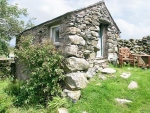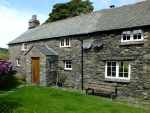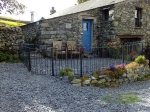Self Catering Holiday Cottages and Bed and Breakfast, Ulpha, between the Duddon Valley and the Eskdale Valley
Things to do
![]()
- Devoke Water
- Local Towns
- Boot Mill
- Eskdale Valley
- Duddon Valley
- Wild Swimming
- Fishing
- Golf
- Horse Riding
- Ratty Steam Railway
- Local Pubs
- Mountain Biking
- Muncaster Castle
- Sheepdog Experience
- Stanley Ghyll Waterfall
- Scafell Pike
- Walking
![]()
Where are we?
![]()
View Woodend's location on a larger map
Country Cottages in the UK
ClickBedAndBreakfast.co.uk Britain's premier Bed and Breakfast guide.
Eskdale Mill at Boot
Situated in a picturesque valley this 16th Century mill is one of the few remaining corn mills with two water wheels.
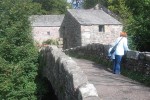 Set on the leafy banks of Whillan Beck, which cascades down from the flanks of Scafell, Eskdale Mill still boasts its historic working machinery. eskdale Mill is one of the oldest water powered corn mills in England, and is now the last remaining working mill in the lake District. This historic building and its unique machinery, has been Grade2* listed and is a vital survivor of a vanishing heritage.
Set on the leafy banks of Whillan Beck, which cascades down from the flanks of Scafell, Eskdale Mill still boasts its historic working machinery. eskdale Mill is one of the oldest water powered corn mills in England, and is now the last remaining working mill in the lake District. This historic building and its unique machinery, has been Grade2* listed and is a vital survivor of a vanishing heritage.
Opening Times
Eskdale Mill is open 11.30 to 5.30, from April to September, including Bank Holidays, but may be closed on Mondays throughout the season. During April and May the mill may also be closed on Saturdays. To confirm opening times and visits outside normal hours, or for access details, please contact Dave King, the miller, on 019467 23335
Address
Eskdale Mill
Boot Mill
Holmrook
CA9 1TG
Website
www.eskdalemill.co.uk
History
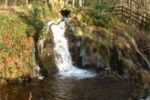 It is not known when milling began at this place but it may be as long as 3000 years ago when the forests were cleared and cereal crops were first grown. The mills recorded history starts in 1294 with an entry in estate records "...all the mill of Easkdale which renders 19s 6d yearly". The mill stones found around the site and even laid in the floor of the mill are estimated to represent at least 700 years worth of milling. The internal workings of Eskdale mill follow the Roman design described by Vitruvius in 79 BC and found in mills of that period operated along Hadrians Wall.
It is not known when milling began at this place but it may be as long as 3000 years ago when the forests were cleared and cereal crops were first grown. The mills recorded history starts in 1294 with an entry in estate records "...all the mill of Easkdale which renders 19s 6d yearly". The mill stones found around the site and even laid in the floor of the mill are estimated to represent at least 700 years worth of milling. The internal workings of Eskdale mill follow the Roman design described by Vitruvius in 79 BC and found in mills of that period operated along Hadrians Wall.
The central structure of the present mill is thought to date back to around 1547 when the tennet was Robert Vycars, at that time wool was also processed at the mill. Most of the Eskdale tennent farmers would be obliged to take there grain for milling at the mill, and it is recorded that the miller took one sixteenth of the grain as payment.
 Edward Hartley was believed to be responsible for the construction of the second waterwheel to drive a set of German millstones - Cologne or Cullin stones - still to be stepped on as you leave the lower door. The installation of these stones shows wheat was then being grown in the valley and the miller had to improve milling techniques to produce a finer quality flour. However the main cereal crops here continued to be oats with barley.
Edward Hartley was believed to be responsible for the construction of the second waterwheel to drive a set of German millstones - Cologne or Cullin stones - still to be stepped on as you leave the lower door. The installation of these stones shows wheat was then being grown in the valley and the miller had to improve milling techniques to produce a finer quality flour. However the main cereal crops here continued to be oats with barley.
Each farmer would send enough grain to be ground so the womenfolk could have a baking session to feed the family and farm workers for up to two months. The local names for this un leavened oat cake were 'Haverbread', from a Viking word. or Clap bread. Ground oats were also used in other dishes of the region like the porridge 'Poddish' and 'Chowdy' - a meaty soup. 17th century West Cumberland estate accounts show three times the acreage put to oats as to barley, while wheat bread was still considered a 'Sunday treat' within the living memory of the valley.
18/19th Century
The Mill's busiest period was over the next 150 years and within the present buildings is much evidence of this prosperity. In 1752 Edward Hartley died and the Mill passed to his brother Henry. who in 1756 was granted permission by the Manor to take four small oak trees for' Bildin a dweling How: and a Steeble at Mill.' Sold to John Tyson in 1772. the Mill was in continual use. as people largely ate what farmers could grow dose by and the cereals processed by these millstones.
The Mill now stands much as it did when peace followed the Napoleonic War. 1818 saw the installation of 7ft diameter cast iron internal gear wheels. replacing wooden gears apart from the applewood gear teeth. The German stones were replaced by French burrs, probably during this modification. The lower waterwheel's cast iron shroud plates, the spokes being part of the cast, will also date from that time, although the corresponding plates in the upper wheel are considerably earlier.
The drying kiln was refurbished in 1819, cast iron tiles replacing the old clay ones. However the bearings used within the mill were still made of stone - volcanic Andesite Porphyry.
More recent times
In 1971 the Mill was bought by the County Council, conserved and opened to the public in 1976.
30 years later it has passed into the custody of a registered charity- The Eskdale Mill and Heritage Trust - dedicated to its continued operation.
